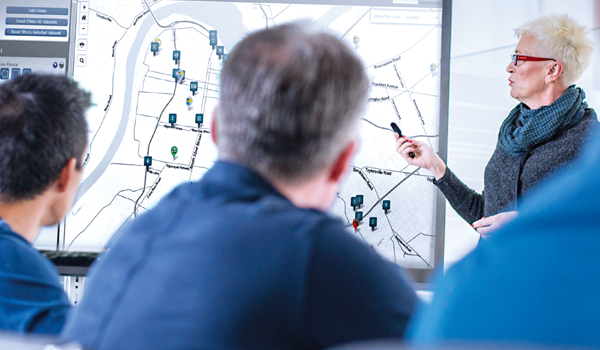Officers need to manage complexities of analytics
Todays law enforcement agencies are widely regarded as being at a data and information crossroads. The ability to search and analyse vast amounts of available data to identify patterns and manage resources is an essential part of successful crime reduction, yet many forces often struggle with the analytics solutions available to them.
Todays law enforcement agencies are widely regarded as being at a data and information crossroads.
The ability to search and analyse vast amounts of available data to identify patterns and manage resources is an essential part of successful crime reduction, yet many forces often struggle with the analytics solutions available to them.
Last years Excellence in Policing conference identified analytics as one of the five most important technology trends impacting policing and justice organisations (PP530).
Jamie Wilson, who is responsible for public safety marketing for NICE Systems throughout EMEA, says managing growing digital evidence is not purely a technology problem the bigger challenge is changing mindsets and processes that have been set in stone for many years.
There has never been a greater abundance of evidence, for example, videos and photos taken by witnesses on their smartphones, posts on social media, CCTV video, body-worn video, and so on, and this has the potential to overwhelm police forces but only if they let it, he explained.
One of the problems, says Jack Williams, product manager for Hexagon Safety and Infrastructures public safety analytics and records management solutions, is that conventional analysis and reporting tools are too complex, inflexible and expensive for general use.
They are also limited to the types of structured data fields within a record that can be analysed, which means they overlook a wealth of meaningful information captured in unstructured data often found in free-form text fields, he explained.
Within these text fields, critical investigative and operational information such as modus operandi, details, property descriptions, gang names and names of individuals and organisations appear only in the narratives, field interviews, or remarks completed by officers and investigators. Because of this, many conventional analysis tools fail to help officers and investigators understand critical context, relations, dependencies, and themes among the data sets they collect.
Mr Williams said the other issue was the operational cost and efficiency issues facing many forces. Because many analytics solutions are complex in nature, they require crime analysts and other data specialist to manage and operate them, he explained.
But the salaries associated with those skills sets can be expensive, he added.
The complexity of conventional analysis and reporting tools also creates operational inefficiencies. Detectives and investigators have to wait on overworked crime analysts to get them information and reports, because many analytics applications dont have self-service capabilities. Detectives and investigators cant perform simple, ad-hoc analysis and reporting on their own.
Hexagon Safety and Infrastructure recently unveiled its own self-serve, web-based crime mapping and analysis application.
InSight Explorer can discover, analyse and visualise complete crime, incident and operational data by making it easier to search and interpret large volumes of unstructured and structured data. This helps to uncover trends and patterns that assist investigations and improve the allocation of resources.
Data is displayed in map and tabular format with interactive widgets, charts and filters for in-depth analysis. With a clearer presentation of complex information, resources can be deployed more effectively, said Mr Williams.







